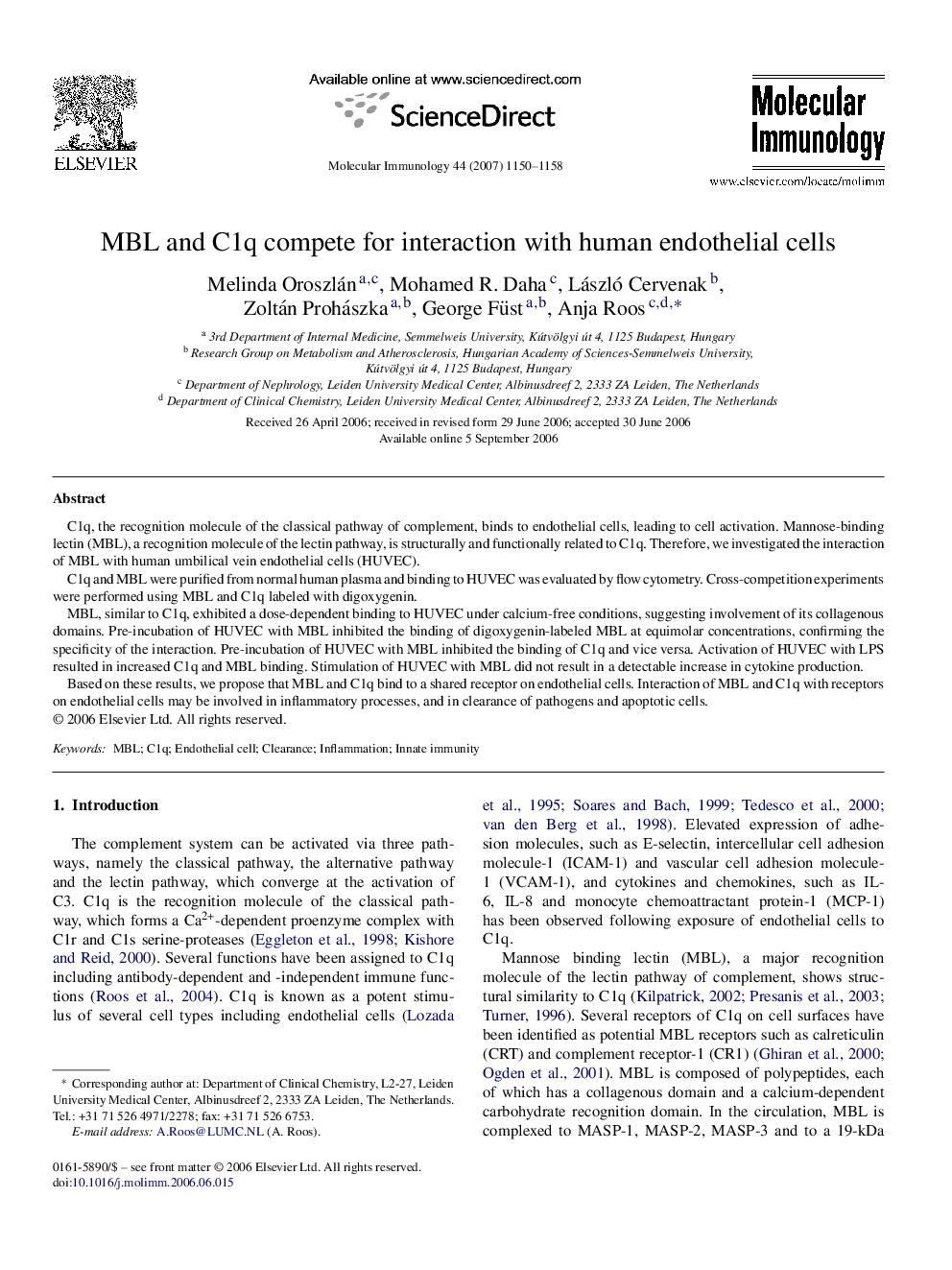| Article ID | Journal | Published Year | Pages | File Type |
|---|---|---|---|---|
| 2832468 | Molecular Immunology | 2007 | 9 Pages |
C1q, the recognition molecule of the classical pathway of complement, binds to endothelial cells, leading to cell activation. Mannose-binding lectin (MBL), a recognition molecule of the lectin pathway, is structurally and functionally related to C1q. Therefore, we investigated the interaction of MBL with human umbilical vein endothelial cells (HUVEC).C1q and MBL were purified from normal human plasma and binding to HUVEC was evaluated by flow cytometry. Cross-competition experiments were performed using MBL and C1q labeled with digoxygenin.MBL, similar to C1q, exhibited a dose-dependent binding to HUVEC under calcium-free conditions, suggesting involvement of its collagenous domains. Pre-incubation of HUVEC with MBL inhibited the binding of digoxygenin-labeled MBL at equimolar concentrations, confirming the specificity of the interaction. Pre-incubation of HUVEC with MBL inhibited the binding of C1q and vice versa. Activation of HUVEC with LPS resulted in increased C1q and MBL binding. Stimulation of HUVEC with MBL did not result in a detectable increase in cytokine production.Based on these results, we propose that MBL and C1q bind to a shared receptor on endothelial cells. Interaction of MBL and C1q with receptors on endothelial cells may be involved in inflammatory processes, and in clearance of pathogens and apoptotic cells.
